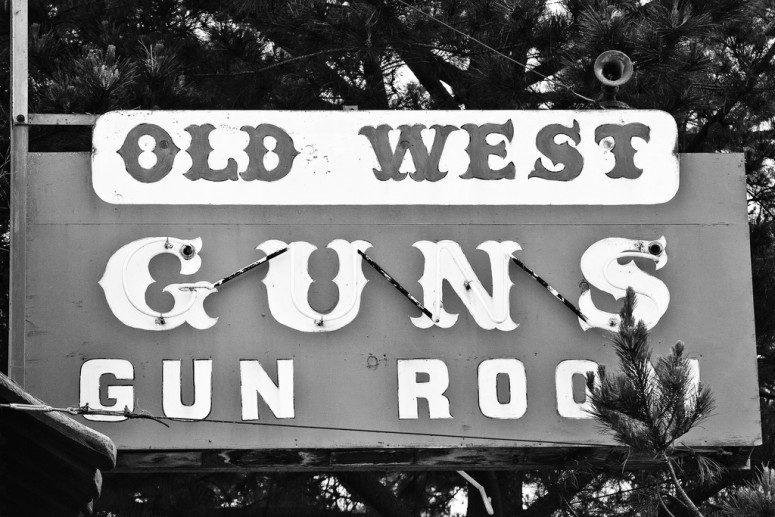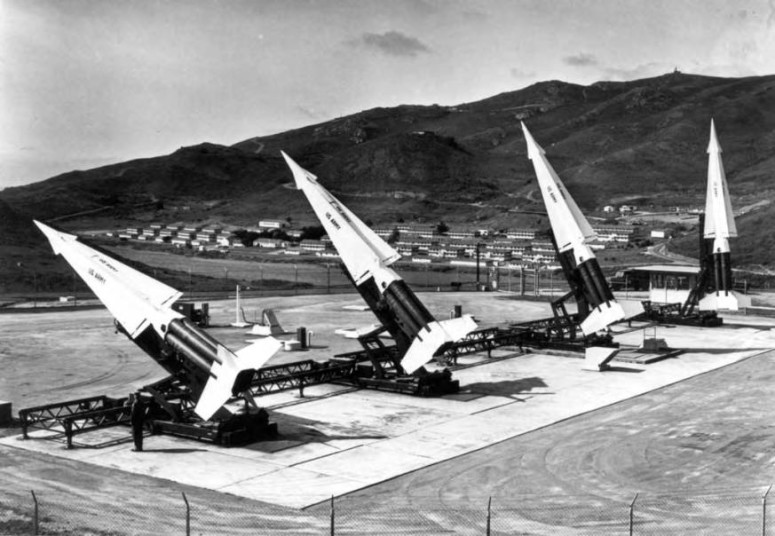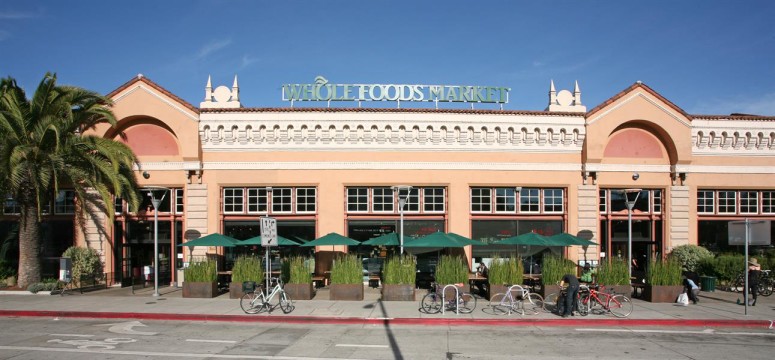We did not grow up with guns. Or maybe I should say, we didn’t think we grew up with guns. I didn’t consider guns much before Columbine. I didn’t think they were close to our current home until the Oakland police started shooting people in my neighborhood. Even if we don’t own one or know anybody who owns one, we are still surrounded. We are not secure.
I don’t see guns, except when we pass through Heathrow, where the machine gun–toting security are hard to miss. The barrels are full of perfect little round holes. My obliviousness may be a kind of denial I inherited from my parents. It was one of their strong points. No weapons. That meant no toy tools of destruction of any kind. For some holiday or another, an older cousin gave us a miniature cannon, and as soon as they drove off, the gift was put in a high cupboard in the laundry room and never seen again. I am not sure if we even had to write a thank-you note. My parents just tried to make the bad stuff disappear.
In the 1960s, one didn’t think of the East Bay as a gun culture. But it was there. Part of our rustic frontier legacy. Across the street from our local mall, El Cerrito Plaza, there was the Old West Gun Room, which looked like a homesteader cabin or a bar. It’s still there. The street behind the local golf course was Rifle Range Road. Almost quaint, if you didn’t really think about it. I didn’t until 2006, when a fellow student from our junior high school, who still lived in the family home on Rifle Range Road, was murdered by his deranged brother-in-law.
On May 15, 1969, Governor Ronald Reagan had Edwin Meese, his chief of staff, create order (over a matter of real estate, wouldn’t you know—the use of Berkeley’s People’s Park for protests) by beating up students and killing one, James Rector. Reagan and Meese had the big guns. We weren’t allowed to go down Telegraph Avenue for the rest of our childhood. But my parents couldn’t stop us or protect us. I remember other protests against the artillery-filled trains bound for the long journey to Vietnam. Reagan and Meese went on to Washington.
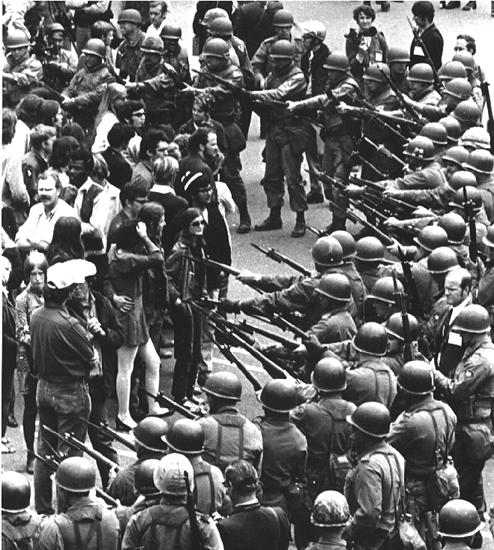
National Guardsmen confront students at Sproul Hall on the Berkeley campus, May 20, 1969. Photo credit: Dick Corten / Peoples Park.
Of course, there were even bigger guns just out the back door, buried in the golden hills behind our elementary school. But they were largely invisible. Now all that remains of the old Nike missile sites in Wildcat Canyon Regional Park are a few mounds and some sinkholes where the silos are collapsing. We also had those pointless air raid drills in elementary school, and a few people built bomb shelters that we read about in Popular Mechanics. We were surrounded, but not secure.
At Boy Scout camp, you could earn an easy merit badge in riflery. I gave my five free rounds to a boy I had a crush on. Later, he became our first Jewish troop chaplain and read from Herman Hesse. That felt like taking a stand, as the 1960s turned into the 1970s.
During my childhood, our town’s annual Fourth of July parade included any number of peace floats. There was a weekly antiwar vigil, which I thought must be the most boring thing in the world, not to mention ineffectual. On trips to the market, I would look for those charming little signs in the multipaned windows that read, “Another Home for Peace” and “War Is Not Healthy for Children and Other Living Things.” Signs from fellow travelers. Never mind that any number of my friends’ parents made their living toiling for the University of California, which managed Lawrence Berkeley National Laboratory, Lawrence Livermore National Laboratory, and Los Alamos National Laboratory. Other parents published underground newspapers, tried to exonerate the Rosenbergs, and were honored with FBI files.
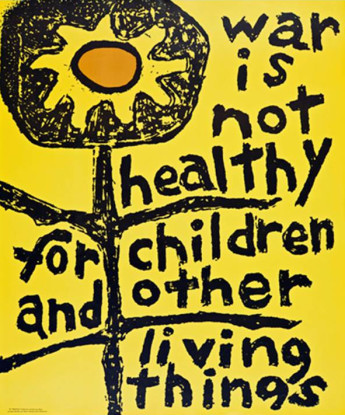
Another Mother for Peace logo. en.wikipedia.org/wiki/Another_Mother_for_Peace
I am remembering all of this because recently I read that an armed guard at our local Whole Foods beat a shopper unconscious after he got into a disagreement with a cashier. I thought, our local Whole Foods has an armed guard? What are they selling besides overpriced produce? The individual lay bleeding outside the store, and the paper said that not one employee called the paramedics. I thought, who told them not to? Why did they obey? Did they think the guard was an extension of the police? And then I wondered, was I any more conscious than the frightened Whole Food workers?
I have probably walked by these Whole Foods paramilitary-style guards hundreds of times. They looked far scarier than the scarecrow security you sometimes find in urban (read ghetto) grocery chains, but I must have thought, this isn’t about me. I must have seen their guns, but they didn’t register. I notice when a friend has moved a chair in his house, but I don’t notice a grocery store guard with a gun? The good news is that Whole Foods fired their security company. But they hired another. They still have weapons.
I don’t feel safe with all of the security that surrounds us. This has only gotten worse since 9/11. Who feels safer because of the TSA? This era extends a lesson that began when I was a child. Don’t trust authority, especially when they have control over the weaponry. If trained police shoot citizens all the time, why would less well-trained security guards not beat people up and leave them to die outside a locked door?
I patronized Whole Foods in large part because I liked the ambiance and I liked the cheese selection. The lesson is that I have been duped by my preference for good lighting and aesthetics and by my own narrative about my place in the economic order. Whole Foods is owned by an antilabor libertarian nutter who has made money off liberal guilt. It is, perhaps, a perfect grocery store for, say, the neoliberal five percent. In other words, the folks who vote for centrist Democrats and actually have retirement and won’t have to shop at a super-discount fluorescent-lit store in their Social Security dotage. So this is my stand at the end of summer: stay away from Whole Foods until they get rid of the armed guards and just walk to the farmers market. Better for my health. But a bit like standing in the rain in the peace vigil in 1969 as it turned to 1970.
